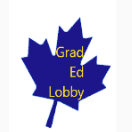
Look through the Canadian Association of Graduate Studies (CAGS) website with a few questions in mind about leadership in graduate education in Canada. A public relations emphasis emerges more than a graduate education leadership focus. If I was a CAGS member or graduate student executive looking for best practice guidance on a basic, long-lasting problem in graduate education in Canada, namely attrition and times to completion, the best practices part of the CAGS website wouldn’t help at all. The CAGS website offers not a word of advice in this area. The three-minute thesis contest however, which is not a mandatory requirement of Canadian graduate program, gets a side panel box and is flashed through the rotating banner feature. Even so, the three-minute contest does not warrant a mention as a best practice.
The Ontario Chapter of the National Graduate Caucus of the Canadian Students’ Federation put times to completion on a list as an issue in 2010. By 2010, CAGS had been around for decades. In November 2015, at a CAGS convention, a graduate student executive brought up times to completion. A little homework on the CAGS website before hand might have saved the questioner the trouble: CAGS, as represented by its website, is mute on a policy for times to completion and attrition. A better question for the graduate student executive to have asked is, “Why doesn’t CAGS address times to completion and attrition in graduate programs?”
The previous Fabrication Nation post concerned lack of action on times to completion and attrition by Canadian graduate student associations. CAGS interests and those of graduate students diverge here, with CAGS inaction and silence according to its membership interests and graduate student inaction out of line with their memberships’ interests. The case of the omitted onus around times to completion and attrition from CAGS becomes more curious as graduate students assume CAGS shares their concerns. What sort of leadership and guidance in graduate education can Canadian graduate students expect from CAGS then?
There is one thing after another on the CAGS site without addressing fundamental aspects of graduate education practice. One conference on the Future of the PhD does not an influential leadership organization make.
According to Tamburri (2013), very few CAGS recommendations got implemented by CAGS members over a ten year period. So now perhaps, instead of recommendations, CAGS promotes contests and its convention, like a PR firm might.
Still CAGS identifies its self as a leader in graduate education in Canada. Membership in CAGS feels and looks good but evidence shows that CAGS’ membership supports the bottom line and status quo. Why is there no advice for best practices around times to completion and attrition on the CAGS website? Maybe CAGS recommended transparency practices thirteen years ago to no avail. CAGS members don’t take to recommendations very well. So the solution for this industry association is to sexy up graduate education with the challenging but non-essential three-minute thesis contest and other contests. Surely CAGS will soon promote The Dance Your PhD contest.
No CAGS isn’t setting out times to completion and attrition statistics publication as a best practice likely because its membership doesn’t want to hear of it and wouldn’t do it anyway. Almost no good public data is available on times to completion and attrition in Canada. DeClou (2014) studied attrition and times to completion in her dissertation. Aside from the work of DeClou, the trouble Mazur took to try to find the answer to How Long Does a PhD take at UBC, and an unpublished, inaccessible and unobtainable leaked study by the U15 group of universities data on times to completion and attrition appears like an elephant in the room, stuffed into the dark closet.
Why, with all the great rhetoric coming out of CAGS officials over the years, have none to these luminaries ever of their own accord and conviction, started a project to publish times to completion and attrition within their own universities? Where is the walk to match the talk. How would CAGS respond to a campaign by graduate students to track and publish times to completion and attrition for every doctoral program? Why, did graduate students and not CAGS commission a much cited, influential and seminal article in Canadian graduate education, Elgar‘s 2003 paper on PhD Completion rates in Canada?
The 3MT contest originated in Australia at Queensland University. Australia punches above its weight in influence of graduate education in North America. Australia’s culture toward graduate training features a robust graduate education community and robust time to completion tracking too. As the history of CAGS and its website shows, Canada has yet to develop a keen community for learning about the practice of graduate education.
Ergo, leadership rests with the people with actual skin in the game in Canada; graduate students. Canadian graduate students, with all their problems in forming a stable, long-lasting national interest group, show the most promise in providing leadership, as a result of commissioning the Elgar study.
The one short-lived, national interest group Canadian graduate students formed, produced arguably one of the most influential papers in Canadian graduate education. The ones with time and money at stake, graduate students, asked the questions, that still stymies CAGS.
CAGS should partner with and seek graduate student representation in order to better influence graduate school leadership. CAGS has yet to reach out to graduate students to work with them in an ongoing fashion, even though CAGS ought to know that graduate student input to program change proved invaluable during the five-year Carnegie Initiative on the Doctorate and of course, here at home, the Graduate Students Association of Canada commissioned Elgar paper lives on. CAGS should seek graduate student representation and actively seek to strengthen and support graduate student associations. CAGS could reach out to graduate student executives to choose some number of graduate student representatives to provide student input and set up partnership programs with CAGS.
At the 2016 CAGS conference, CAGS should set out to actively organize graduate student representation within CAGS. Graduate students should lobby CAGS to join forces for projects and representation.
CAGS should drop the marketing aspect in its award criteria for new programs. Such appeals to marketing show a truer purpose of CAGS; to help its members promote graduate education rather than develop intelligence about it, study it, solve chronic problems within it and move graduate education practice.
After all this time, CAGS has evolved into the kind of organization its members want. Marketing puts those graduate student bums in seats. Graduate education is Canada has grown apace. If it ain’t broke don’t fix it, don’t study it, don’t keep stats on it, and don’t show any enduring empathy or connection to those bums in seats. CAGS get your mojo working.


